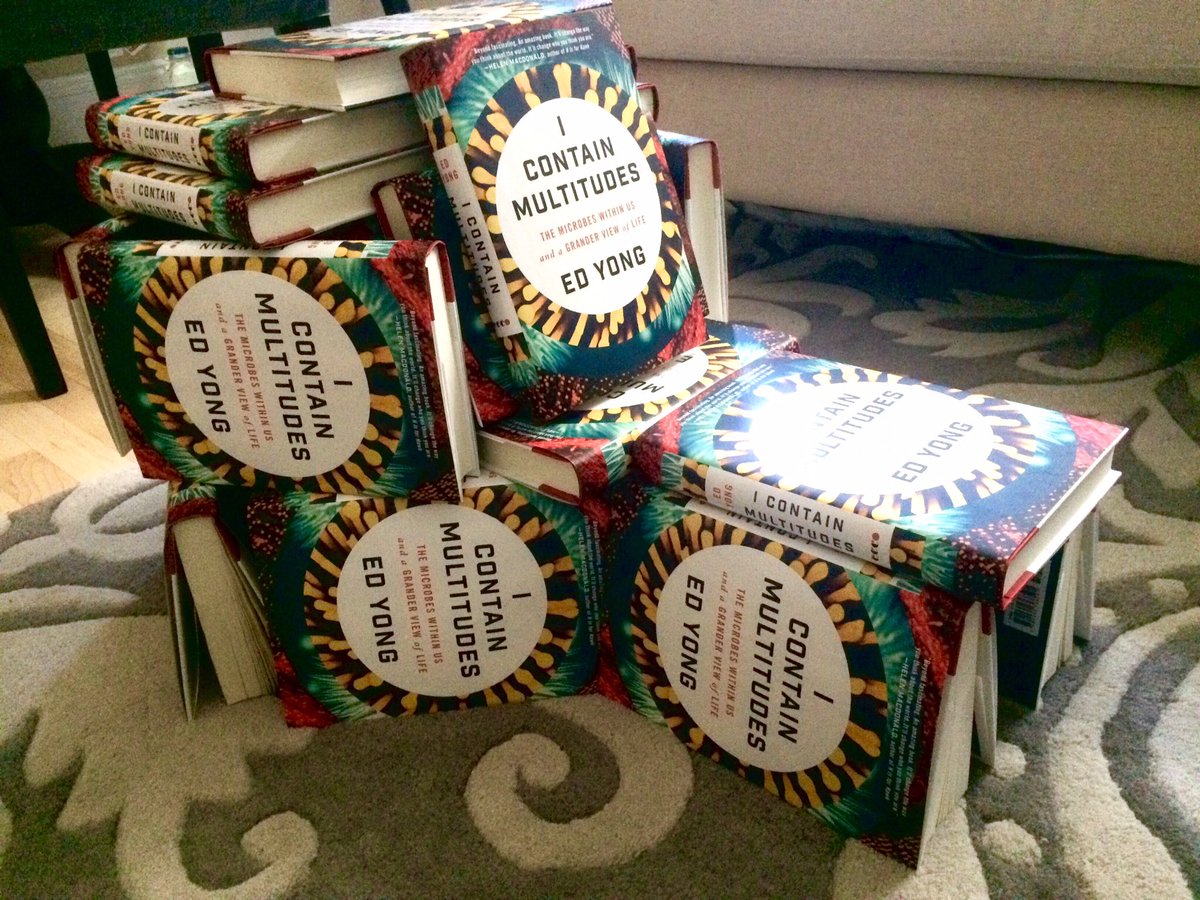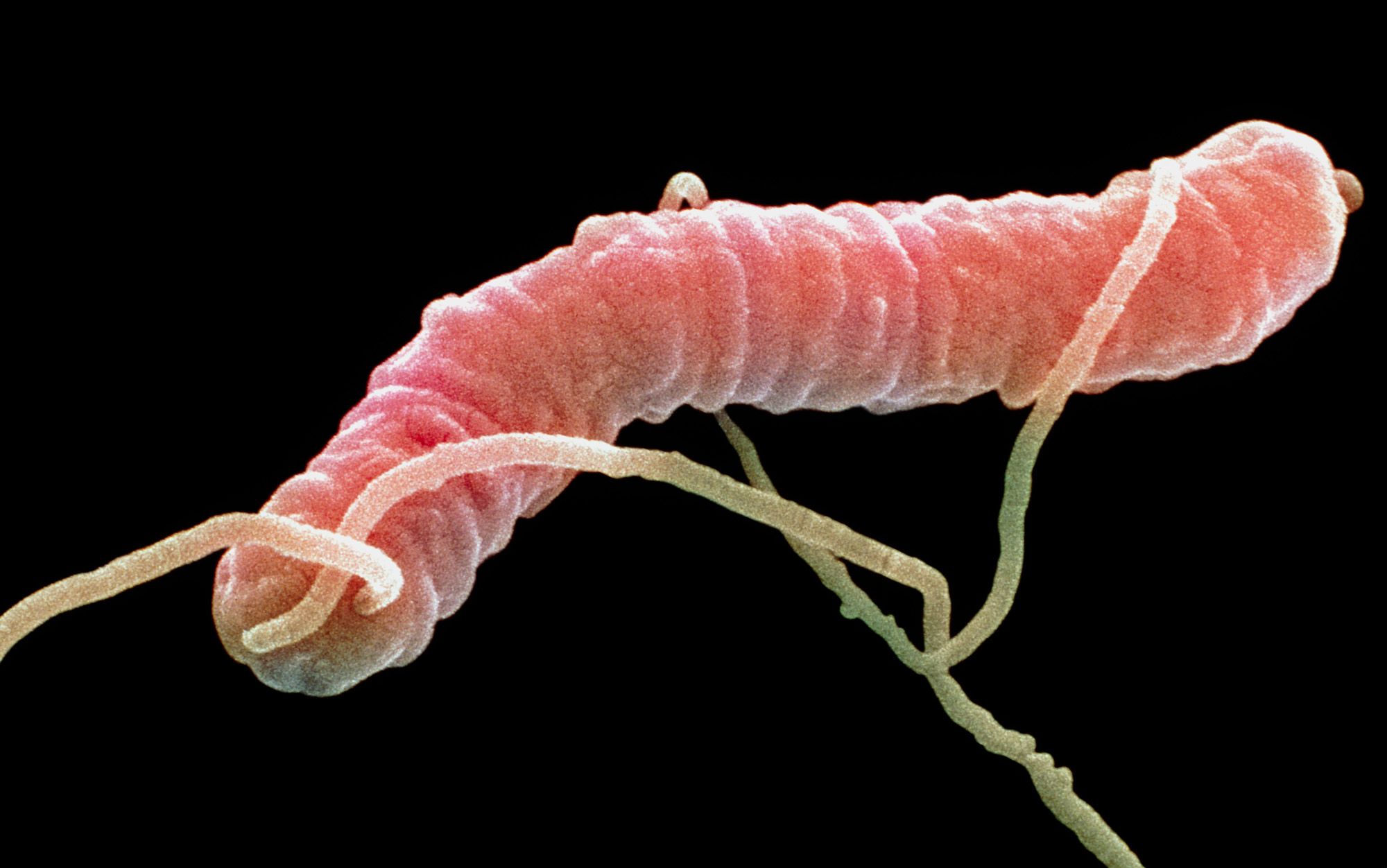The Ed's Up #148

I CONTAIN MULTITUDES is almost here!
After what feels like an eternity, my first book is finally being unleashed upon the world (er, or at least, upon the US and Canada) next Tuesday! I'll send out another newsletter on launch day, but thank you all so much for supporting me through this. I really hope you enjoy reading it.
In the meantime, this review by The Week really nails what I was trying to do with the book. Robert Krulwich riffs off a section on the man who first saw microbes, and what made him special. Joanne Manaster interviewed me for ReadScience. And as always--and this will be the last time I get to say this!--you can pre-order a copy here.

Microbes have no morals
In this excerpt from my book, published at Aeon, I argue that there are no good bacteria or bad bacteria. "Slowly, the view that ‘all bacteria must be killed’ is giving ground to ‘bacteria are our friends and want to help us’. The problem is that the latter view is just as wrong as the former. We cannot simply assume that a particular microbe is ‘good’ just because it lives inside us. There’s really no such thing as a ‘good microbe’ or a ‘bad microbe’. These broad-brush terms belong in children’s stories. They are ill-suited for describing the messy, fractious, contextual relationships of the natural world."

Sham Poo Washes Out
"On the one hand, the concept of fixing gut problems by loading people with stools from healthy donors—a procedure aptly known as a fecal transplants—is gaining in acceptance. On the other hand, the disappointing results from a new clinical trial suggest that there’s still a lot we don’t know about why this unorthodox technique works." (Image: Nir Elias)

The Lonely, Thirsty, Final Days of the Doomed Alaskan Mammoths
"Saint Paul lies halfway between Russia and the United States. It used to be part of a land bridge that connected Asia and North America. But rising sea levels cut it off from both continents and turned it into one of the world’s most remote islands. The encircling waters also trapped a population of woolly mammoths. While their kin went extinct on the mainland sometime between 14,000 and 13,200 years ago, the Saint Paul mammoths persisted for millennia more. At just 110 square kilometers in area, Saint Paul is roughly the size of Paris or Walt Disney World. And yet, this tiny nubbin of land sustained a population of giant creatures for at least 8,000 years. Now, a team of scientists have at least worked out exactly when they finally died—and, more importantly, why." (Image: Jonathan Blair) 
Beautiful Waves of Giant Booty-Shaking Bees
"Instead, he believes that the entire colony acts like a lung. If the workers push their legs against the comb, the entire curtain would arch outwards, lowering the pressure inside the comb and drawing fresh, cool air in—the nest inhales. When the bees relax, the curtain closes down and stale, warm air inside the comb is pushed out—the nest exhales. By moving together like a diaphragm composed of thousands of bodies, the bees can ventilate and cool their homes." (Image: Muhammad Mahdi Karim)

Homes in Wealthier Neighborhoods Tend to Have More Bugs
"Now, Misha Leong from the California Academy of Sciences has busted another myth by analyzing the team’s data. While many people intuitively think that homes in poor neighborhoods would host more bugs, it’s actually the other way round: the wealthiest areas that harbor the widest range of arthropods. Of course, the houses in rich neighborhoods tend to be larger, and their lawns are both bigger and richer in plant life. But even after adjusting for these factors, Leong still found a link between neighborhood income and arthropod diversity. In short: more money, more bugs." (Image: Matthew Bertone)

The World’s Top Predators Are Dining From Dwindling Menus
"This is a story about large predators and cascading consequences, featuring two scientists named Wolf and Ripple, because sometimes life just hands you treats like that." (Image: Mitsuaki Iwago)
More good reads
- Here’s a long extract from Patient HM, a book by Luke Dittrich that I highly recommend
- “Why do ppl pay $20 to smell something that smells like a dead body?” Elif Batuman visits the corpse flower.
- Facebook is not a technology company, argues Ian Bogost, persuasively
- Sarah Perry talks to the Guardian about her book The Essex Serpent, easily one of my favourite novels of the year
- A Reptile Dysfunction: how Sulcata tortoises became a popular American pet, and why that’s a problem.
- A lot of Spurious Correlations.
- What happens when we use CRISPR gene-editing on our crops? Brooke Borel investigates.
- Sarah Laskow got a shipwreck expert to review The Little Mermaid and the results are wonderful.
- And finally, brighten up your day with 17 pictures of Bill Clinton enjoying balloons like he’s seen them for the first time.
And that's it! Thanks for reading.
-Ed